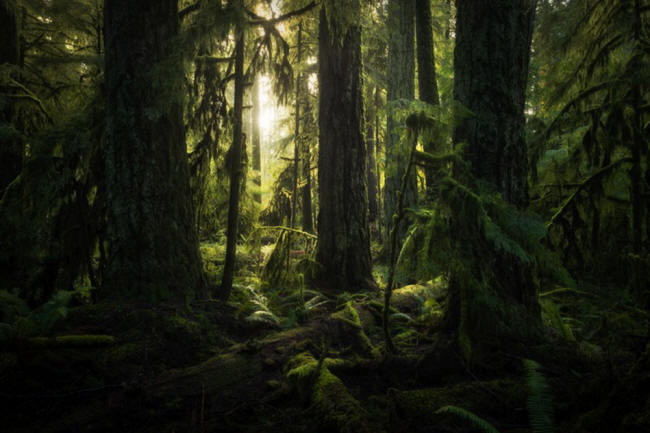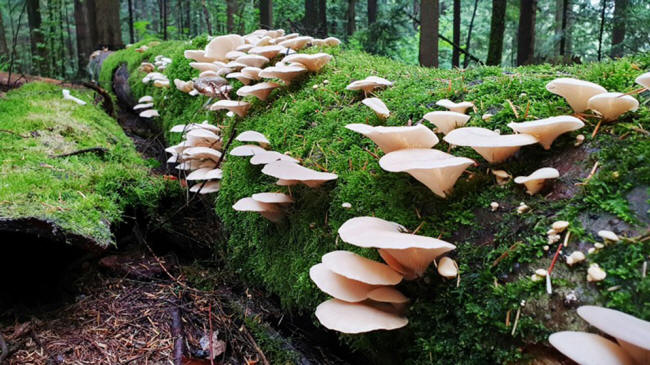|
by Emma Marris Douglas firs in British Columbia, Canada: 'mother trees' help seedlings all around to flourish.
Credit: Getty
traces forests' support networks and finds parallels in her own life...
So I thought...
It was "a network as brilliant as a Persian rug", she recalls in her memoir 'Finding the Mother Tree' - a network through which multiple tree species were exchanging carbon.
The trees were
cooperating.
Forest ecology is instead a much more nuanced dance, in which species sometimes fight and sometimes get along.
This calls into question the way that most foresters manage trees.
Throughout her career, Simard has shown that, in fact, it takes a whole 'village' to raise a tree.
When Douglas firs are infested with western spruce budworm (Choristoneura occidentalis), they alert pines to which they are connected through the wood wide web, and these respond by producing defense enzymes.
In the middle of all this activity are the mother trees.
Simard creates her own complex network in this memoir, by weaving the story of these discoveries with vignettes from her past.
The themes of her research:
...are also themes in her own life.
The network of friends, family and colleagues who support Simard, as a scientist and as a woman, is visible throughout:
Simard's life story is, of course, unique, yet it has a striking universality.
After working for a logging company, she moved into government service and then into academia, trying in each job to untangle the subterranean mysteries of the forest.
She fought to have her ideas taken seriously in a male-dominated field.
(There are shades of Lab Girl, by US geobiologist Hope Jahren, in her clear-eyed depictions of what she has to deal with behind the scenes - from being passed over for jobs for which she was the best candidate, to being called "Miss Birch" behind her back, a sound-alike for a much harsher epithet.)
Simard found love, lost it, and found it again. She struggled, like so many scientists, to balance her research and her roles as a wife and mother.
She faced mortality when diagnosed with cancer.
The thread-like roots of fungi are an essential element of a forest's 'wood wide web', through which trees exchange carbon, water, nutrients and information. Credit: Claire Welsh
It feels like a privilege
to be let into her life.
Simard got her first morsel of proof for her theory in 1993, while kneeling on the forest floor holding a Geiger counter to detect the radioactive carbon-14 that she used to track carbon flows through plants and fungi.
After publishing her Nature paper, Simard showed that,
The finding suggests that trees maintain a level of control through the network that one might call intelligence. As she argues, plants seem to have agency.
They perceive, relate and communicate, make decisions, learn and remember, she writes,
For Simard, that implies
that they are due a certain respect.
It is tempting to ascribe the dominance of the 'brutal competition' narrative to the fact that ecology was dominated by men, and to find poetic power in the idea that a woman saw cooperation when her male colleagues couldn't.
But Simard tells a more complex tale.
Simard writes that big old trees are "mothering their children" by sending them, through the forest network, sugars, water, nutrients and information about threats.
The beauty of the forests
of my youth turns out to be shaped, in a sense, by love...
|



